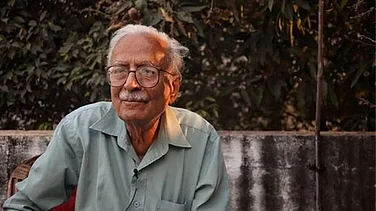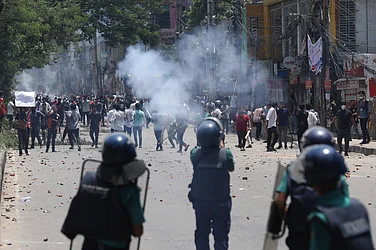Mahatma Gandhi’s political ideas are proving to be difficult to bury. The farmers’ mahapanchayats being held across north India in defiance of Section 144 are 21st century examples of civil disobedience. The principle of Satyagraha has been advocated not just during the farmers’ agitation but also during the anti-Citizenship Amendment Act (CAA) movement before it. What’s particularly interesting is that they (Gandhian ideas) have re-emerged despite consistent rejection of Gandhi’s ideas from all streams of post-Independence Indian political thought.
The rejection gained momentum with Jawaharlal Nehru treating Gandhi more as a Mahatma rather than a political thinker. Even before Independence, Nehru was quite clear that the Congress should distance itself from the vision of Gandhi’s Hind Swaraj. In a rather impatient letter to Gandhi in October 1945, Nehru insisted that, “The Congress has never considered that picture, much less adopted it.” The socialists at the time, who spread across several political parties, associated themselves with the ideas of Lohia rather than Gandhi. And the followers of Hindutva have always had a hidden admiration for Gandhi’s assassin; an admiration that is now being expressed more openly.
The antipathy to Gandhian thought across the political spectrum is built around a common feature. At the core of this thinking is an ideology that is closer to a grand theory than a worldview. The ideological positions vary from the economic and cultural Right and Left, and various points between the extremes. Politicians may compromise on these ideological positions in their pursuit of power, but they all believe that their ideological grand theories should be the ideal that they should follow.
However, in contrast, Gandhi made it clear that he did not believe in grand theories. He insisted that society was in a process of continuous change, and the best one could do was to analyse specific situations in that process. These situations could be altered, and the direction of the process changed, by individual and group actions. As the desired actions would vary across individuals and groups, there would inevitably be negotiations of different kinds between those with a stake in a particular situation. Gandhi’s politics was steeped in influencing these negotiations, in a way that avoided violent conflict.
His route to non-violent politics was based on countering the more powerful instruments in these negotiations. Social and political power was to be countered through mass mobilisation, leading, if necessary, to civil disobedience. The economic power of the owner within a workplace was to be offset by giving workers the economic safety-net of an alternative job, including the making of Khadi. And the power of righteousness was to be developed not just by pointing to unfairness, but also by using the force of truth, or Satyagraha.
Even as dominant post-Independence political thought has consistently ignored this approach, trends in Indian political economy have strengthened each of the three instruments of Gandhi’s political negotiations: mass mobilisation, the availability of work options, and the felt need for fairness. Decades of elections have strengthened grassroots awareness, contributing to mass mobilisation on specific issues. As the farmers’ movement and the anti-CAA agitation have shown, mass mobilisations have emerged as the last line of defence against an all-powerful state.
The options available to workers have also increased to a point where higher wages are sought to be achieved through a change in jobs rather than negotiations within the same workplace. The option of changing jobs has been used across the wage hierarchy, even if it is most prominent in modern sectors like information technology. And if work-from-home extends beyond the Covid-19 crisis, it would add even more flexibility to the options available to workers. In Gandhian terms it would encourage a movement from centralised mass production to decentralised production by the masses.
The use of righteousness has also developed deep roots in Indian politics, with politicians quick to claim unfairness. Much of Indian politics is about groups feeling victimized. Indeed, righteousness in politics may have grown to a point where it has become unfair in itself. Gandhi is unlikely to have approved of a situation where a community that accounts for four-fifths of the country’s population, together with even higher shares of its economic and political power, claims to be a victim of minority appeasement.
As the course of Indian politics gets increasingly driven by contestations between political power and mass mobilization, between economic power and the availability of options to workers, and between competing claims of righteousness, a return to Gandhi’s ideas may help us find a method in what appears to be madness. Gandhi is believed to have said that new ideas are first ignored, then laughed at, then fought, before they finally win. Gandhi’s politics was ignored in the Nehruvian years, laughed at in the midst of the cold calculations of the Indira Gandhi era, and fought aggressively in the years of Hindutva. It should not be a surprise if now a twenty-first century version of Gandhi’s ideas wins.
(The author is an economist. Views expressed are personal and do not necessarily reflect those of Outlook Magazine.)





















